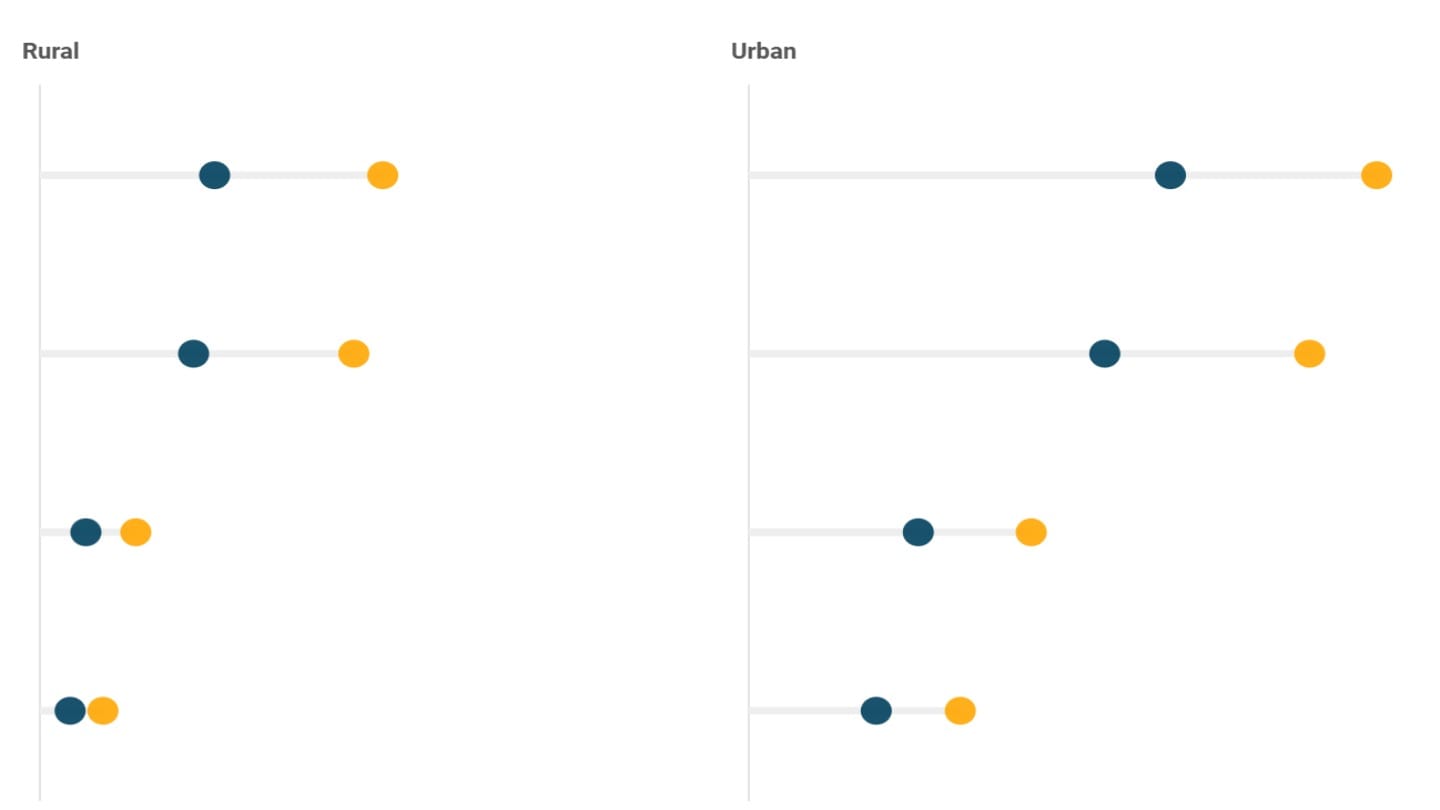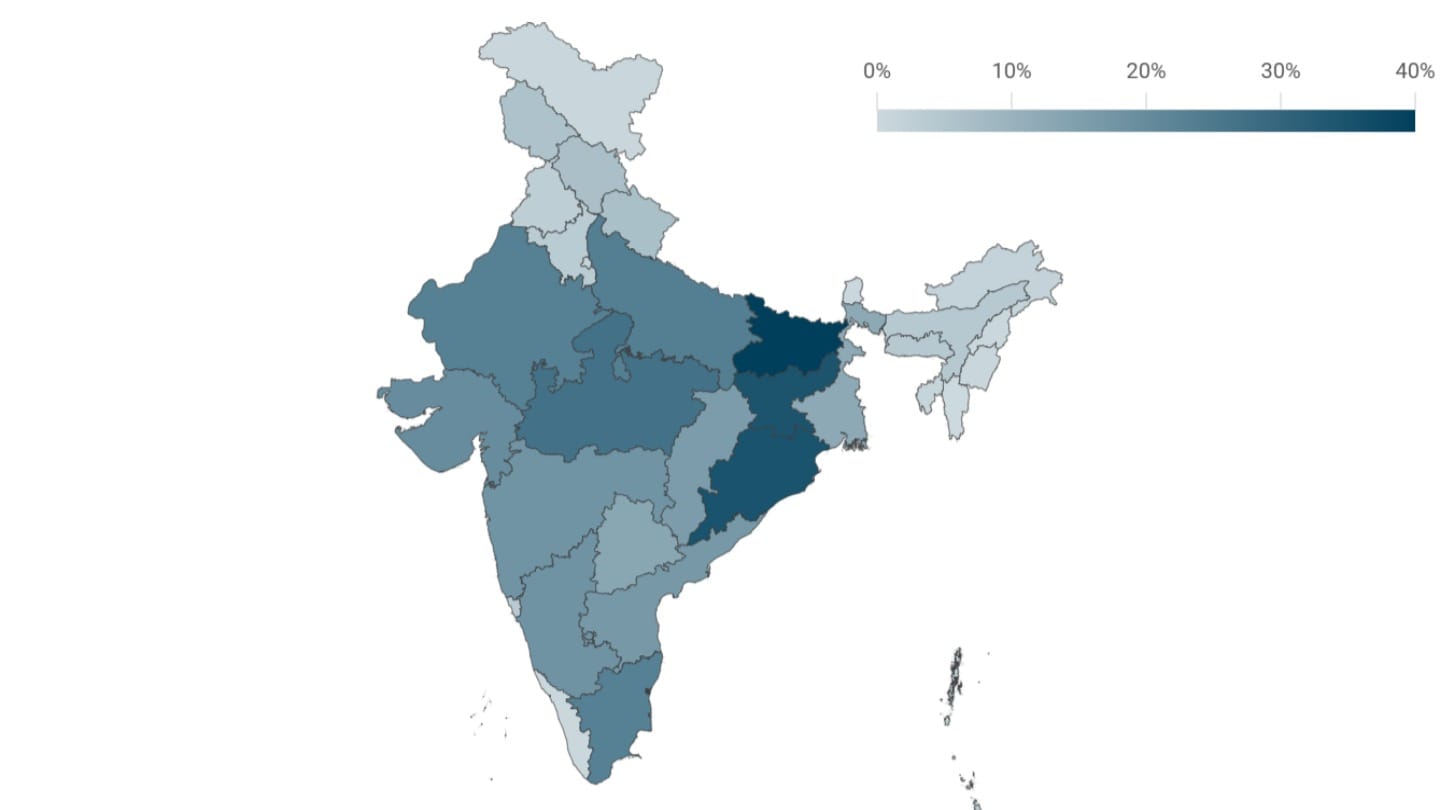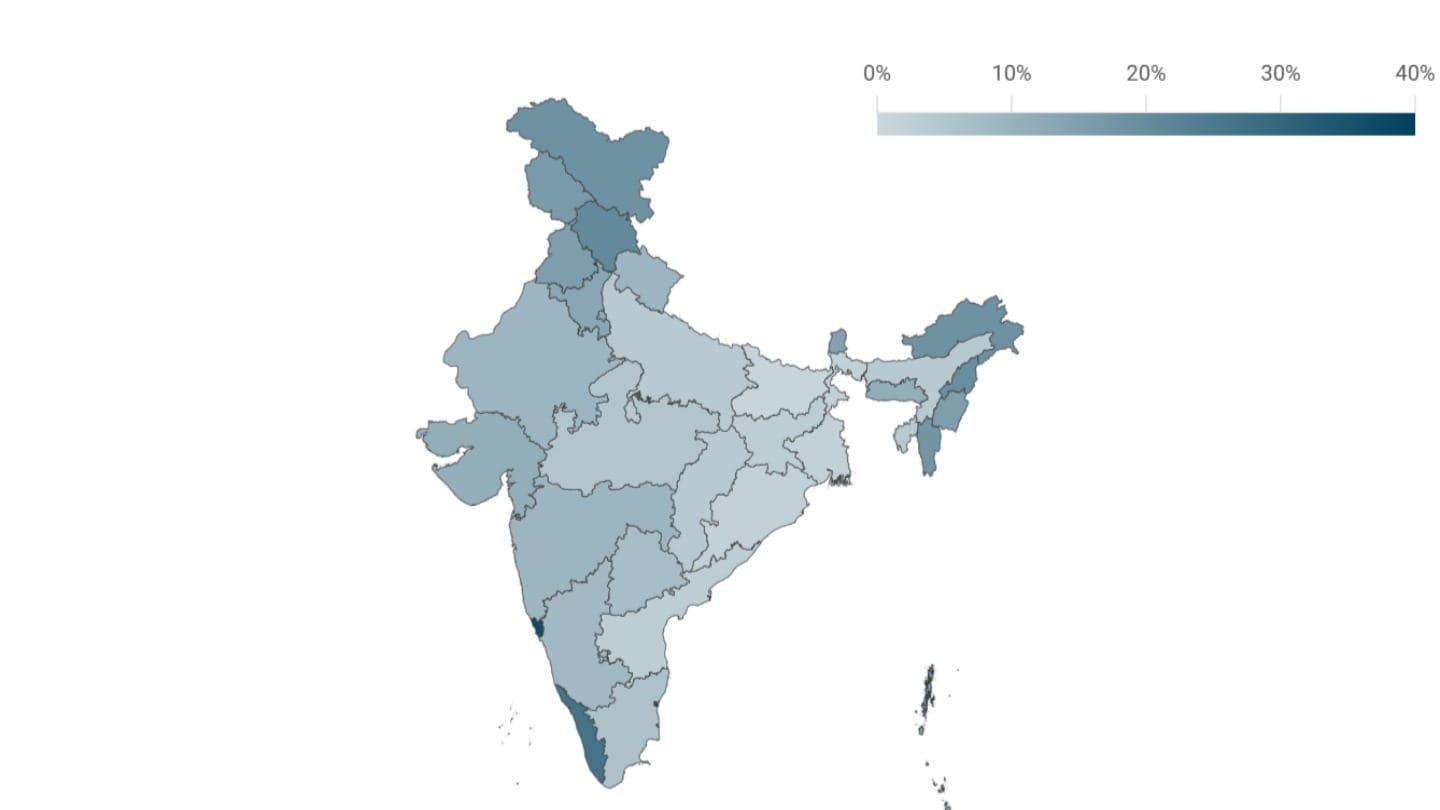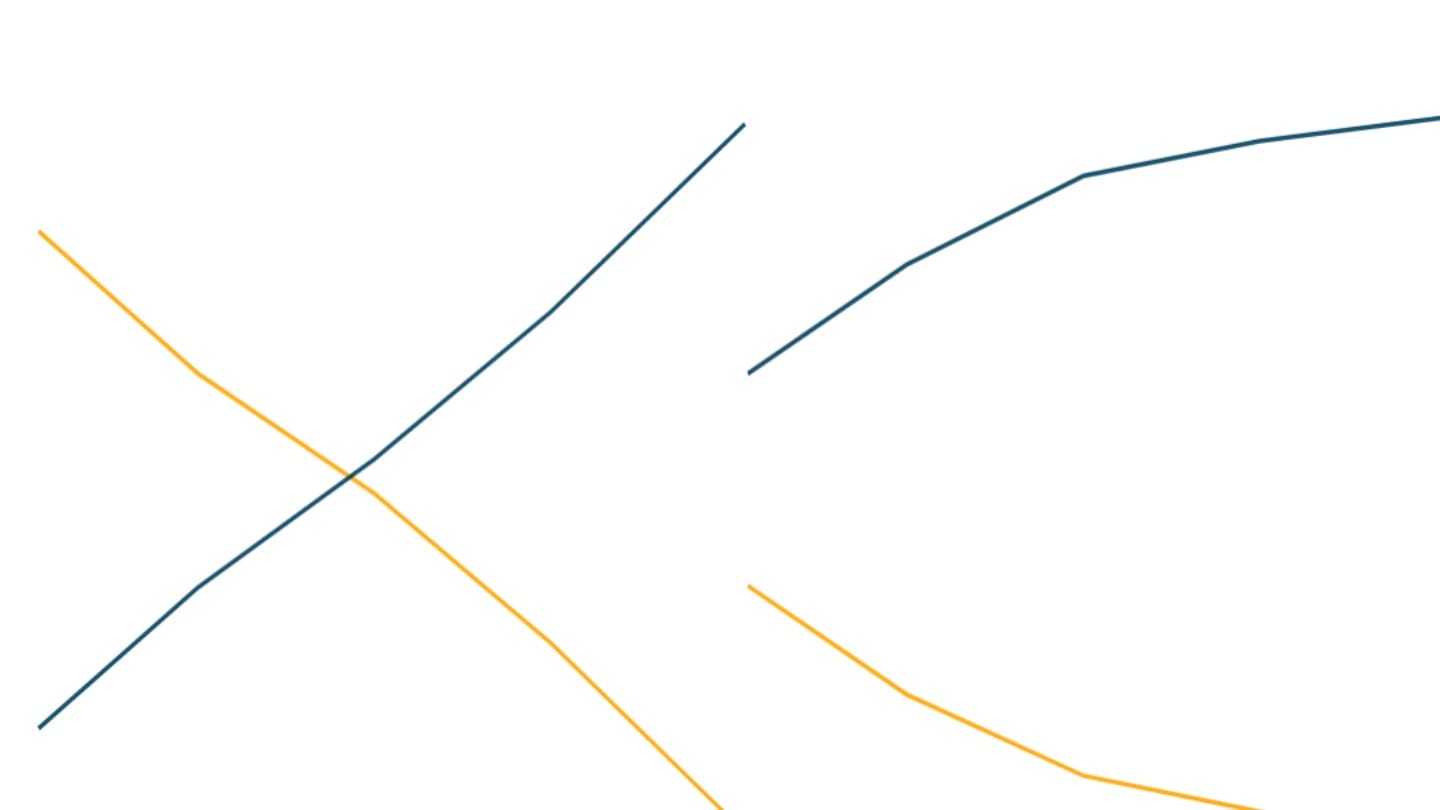Computer ownership and usage
Household ownership of computers in India remains low, particularly in rural India. The share of Indian adults who report being able to use a computer is also growing very slowly.
Over the last two decades, India has seen a massive expansion in the usage of mobile phones and the internet. However, the ownership and usage of computers have grown much more slowly.
Household ownership of computers
Fewer than 10% of Indian households own a laptop or a computer.[1] In most developed countries, on the other hand, computer ownership is above 75%.[2]
Among the 30 million households in India that own a computer, the majority have a laptop (90%), while 20% own a desktop. A little under 10% of those who own computers report having both a laptop and a desktop.
The ownership of computers in India has had a slow growth.[3] Over the last two decades, the share of households who own computers grew from just over 1% to just over 9%. This growth has been even slower in rural areas than urban areas. By 2023 just 4% of households in rural areas owned a computer; in urban areas however, one in five households now own a computer.
Computer ownership is much more common among richer households. Among the richest 20% of urban Indians, more than two in five households own a computer, while among the poorest households, computer ownership is rare.[4]
Similarly, computer ownership is the highest in the richer and more developed states. More than one in five households in Kerala, Sikkim, Mizoram and Delhi own laptops. Rural computer ownership meanwhile is the highest in Kerala and Tamil Nadu.[5] On the other hand, fewer than one in ten households in the states of Madhya Pradesh, Uttar Pradesh, Bihar and Odisha own computers.
Ability to use computers
In addition to data on ownership, we also look at data on the reported ability of Indian adults to use computers. As of 2025, a little over one in five adults, or 200 million people, were able to operate a computer.[6] The ability to use computers in rural areas is half the level in urban areas, where one in three adults can use a computer.
The share of adults who can use a computer is twice the share of households which own a computer, suggesting that many Indians might have learned to use a computer, or use one in colleges or offices, without owning one.
India has made limited progress in the ability to use computers over the last decade. While the proportion of rural adults who are able to use computers has increased, it still stands at just one in six adults. In urban areas, this figure is much higher - over one in three urban adults are able to use a computer - but this number has grown little over the last decade.[7]
The ability to use a computer is much higher among richer groups.
More developed states including Kerala, Tamil Nadu and Maharashtra have the highest shares of people who report being able to use computers.
The ability to use computers is the highest among teenagers and those in their twenties, and drops sharply among older groups. But even among teenagers and those in their twenties, only a third report having used a computer.
The gender gap in the ability to use computers is significantly wider among older age groups, but is low among children and teenagers.
Using phones and computers
Computer ownership lags substantially behind mobile phone ownership: more than 95% of Indian households report owning a mobile phone,[8] but only 9% households own a desktop or a laptop. As a result, smartphone usage is far higher than computer usage in India: while seven in ten adults in India report having used a smartphone in the last three months, fewer than two in ten had used a computer over the same time.[9]
This could have an impact on the ability of young Indians to develop Information Communication and Technology skills such as the ability to configure hardware, work with spreadsheets, and write computer programs.
While half of Indian adults are able to send messages, including text messages, only a fourth are able to send and receive emails or install software, and just one in ten can work with spreadsheets. When compared to other countries, the ICT skills of young Indians are far behind- only one in ten Indians between 15 and 24 years of age can create electronic presentations, for instance, as against more than half in Mexico. In Canada, one in five young adults can code or write programs; in India this number stands at just 1%.
[1] Comprehensive Annual Modular Survey (CAMS, 2023), National Statistics Office.
[2] Although computer ownership data is not collated every year, the International Telecommunications Union DataHub maintains a repository of such data maintained by statistical offices in countries. Data used for comparison may pertain to different years for different countries.
[3] NSS Round 58, Housing Condition Survey (2002), and NSS Round 79, Comprehensive Annual Modular Survey (CAMS, 2023), National Statistics Office.
[4] Household quintiles are constructed by arranging the population according to the monthly per capita consumption expenditure recorded in the same survey that records computer possession, and by dividing it into five equal parts by making cuts at the 20th, 40th, 60th and 80th percentile.
[5] Based on NSS regions.
[6] The Comprehensive Modular Survey - Telecom (CMS-T, 2025) asked respondents if they were able to use any of the following: desktop PC, laptop, tablet, palmtop, notebook, etc.
[7] The NSS Round 71, Social Consumption on Education Survey (2014) asked individuals if they were "able to operate a computer". The CMS-T 2025 asked respondents if they were able to use any of the following: desktop PC, laptop, tablet, palmtop, notebook, etc.
[8] Comprehensive Annual Modular Survey (CAMS, 2023) asks households the number of mobile phones (including smartphones) and number of computers the household possesses.
[9] The Comprehensive Modular Survey - Telecom (CMS-T, 2025) asked people above three years of age if they had used a mobile phone or computer in the three months preceding the survey. The survey covered a smaller sample (34,250) than the Comprehensive Annual Modular Survey (302,085), and was conducted over three months as compared to one year for CAMS (2023).




